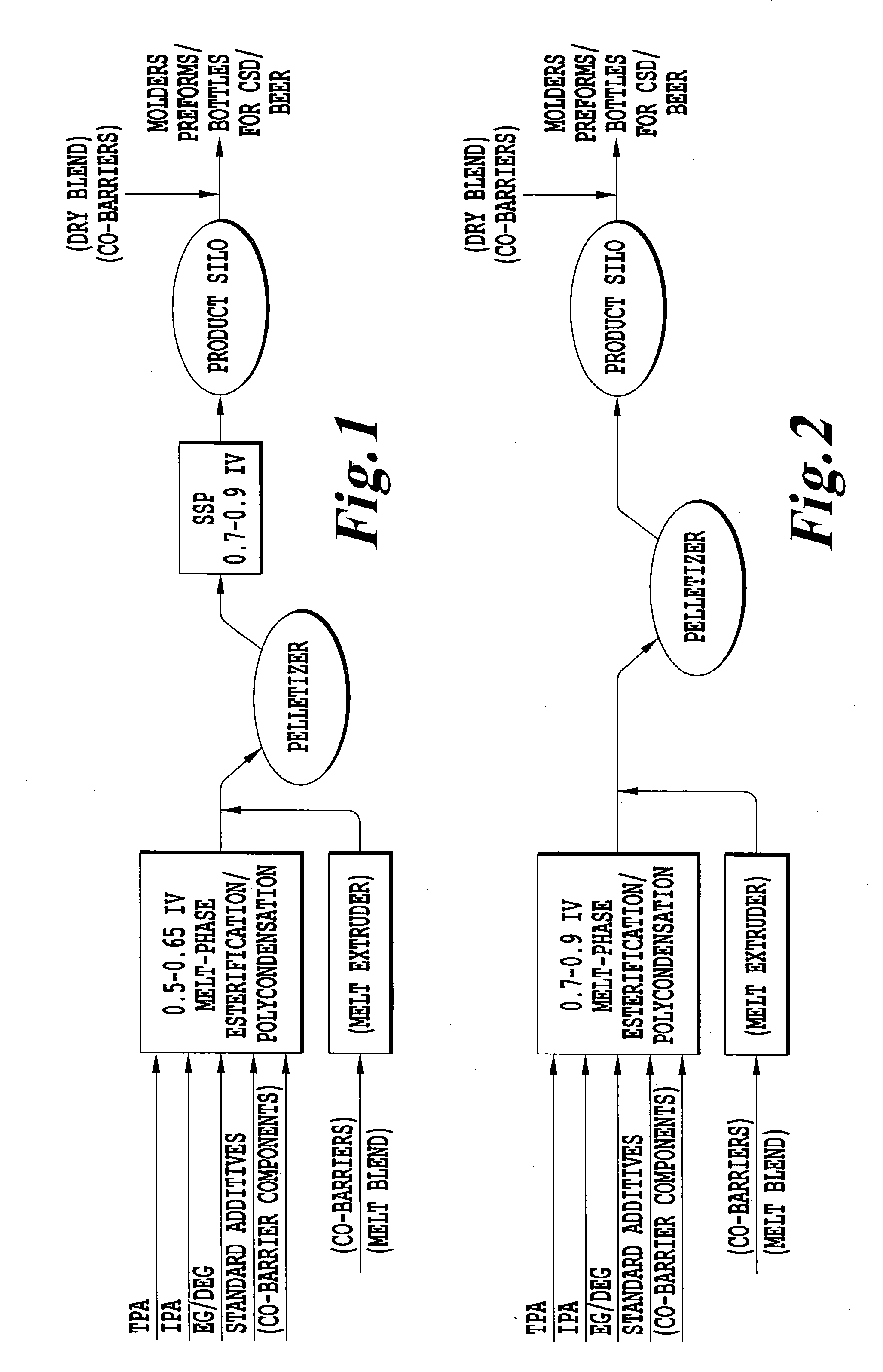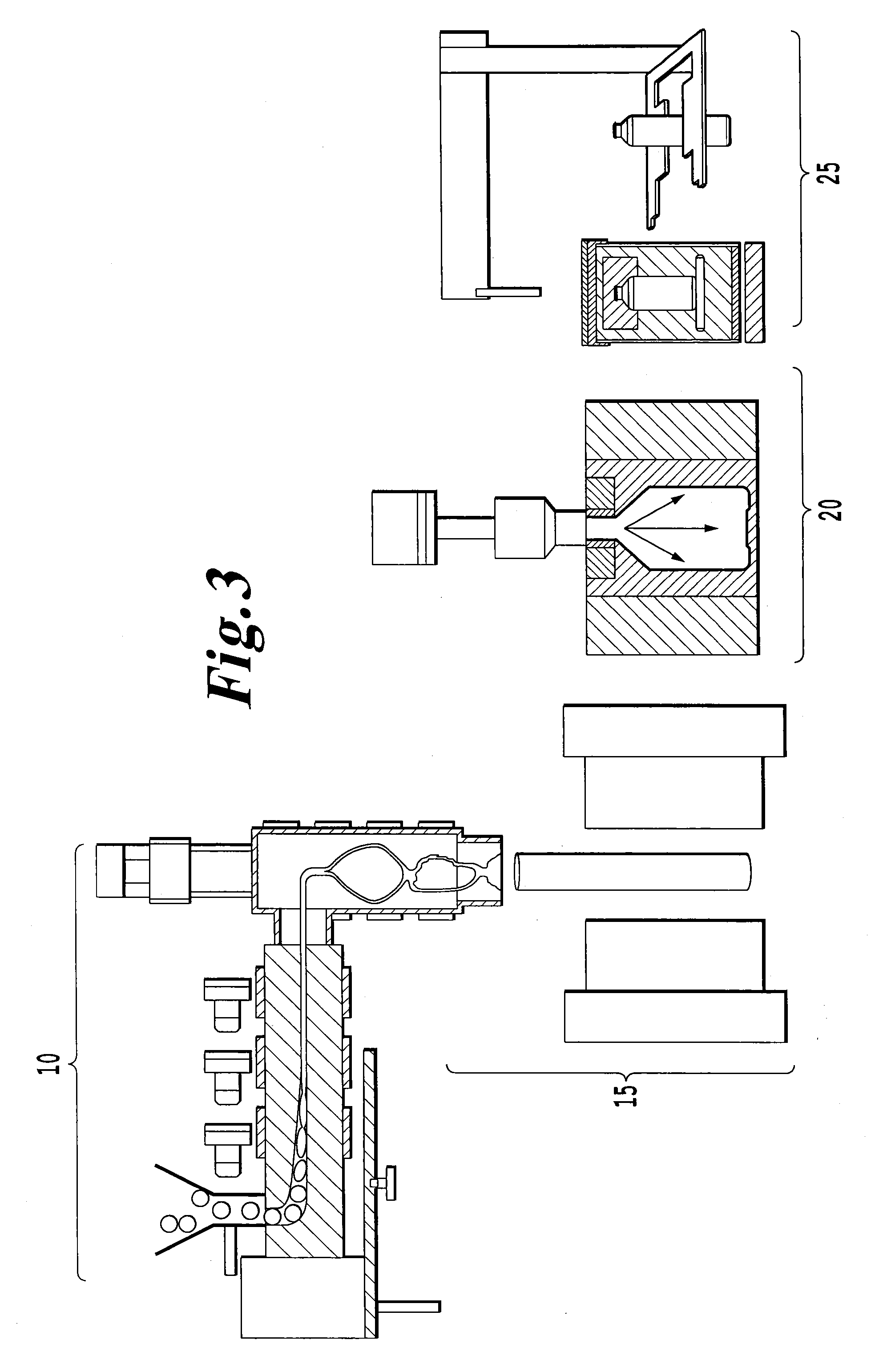Ultra-high iv polyester for extrusion blow molding and method for its production
a technology of ultra-high viscosity and polyester, which is applied in the field of ultra-high intrinsic viscosity (iv) polyester resin, can solve the problems of affecting certain physical and chemical properties of polymeric materials, requiring high capital expenditure, and subjecting the resin to a long heat history, etc., and achieves high iv polyester, less energy, and fast production time
- Summary
- Abstract
- Description
- Claims
- Application Information
AI Technical Summary
Benefits of technology
Problems solved by technology
Method used
Image
Examples
examples
[0111]In a comparison of the SSP behavior of conventional PET resins and the ultra-high IV PET resins of the present invention, the following experiments were performed with the experimental data recorded in TABLE 1.
experiment 1
[0112]Four batches (batch nos. 1, 2, 3 and 6) of 300 lbs. each were solid stated to an IV of 1.0 in a rotary vacuum dryer rotating at 2.5 rpm and under vacuum of 110 Torr. The batch time was started when the pellet temperature had reached 210° C. for batches 2 and 3 and 217° C. for batches 1 and 6. Samples were taken at the start of the batch and periodically through the batch to determine the SSP lift rate and the time that the batch would reach the final IV of 1.0. These samples were measure for intrinsic viscosity using the method described in ASTM D 4603-03. The results of this analysis are shown in FIG. 4. Batch 1 is MT 3% IPA, batch 2 is MT 6% IPA, batch 3 is WMT 6% IPA and batch 6 is 3001.
experiment 2
[0113]Three batches of MT 6% IPA (batch nos. 2, 4 and 5) were solid stated in a rotary vacuum dryer rotating at 2.5 rpm and under a vacuum of 110 Torr. The batch time was started when the pellet temperature had reached the set point of 210° C. Batch 2 was 300 lbs. and was lifted to 1.0 IV. Batch 4 was 500 lbs. and was lifted to 1.0 IV. Batch 5 was 500 lbs. and was lifted to 1.3 IV. Samples were taken at the start of the batch and periodically through the batch to determine the SSP lift rate and the time that the batch would reach the target IV. These samples were measure for intrinsic viscosity using the method described in ASTM D 4603-03. The results of this analysis are shown in FIG. 5
PUM
| Property | Measurement | Unit |
|---|---|---|
| temperature | aaaaa | aaaaa |
| temperature | aaaaa | aaaaa |
| temperature | aaaaa | aaaaa |
Abstract
Description
Claims
Application Information
 Login to View More
Login to View More - R&D
- Intellectual Property
- Life Sciences
- Materials
- Tech Scout
- Unparalleled Data Quality
- Higher Quality Content
- 60% Fewer Hallucinations
Browse by: Latest US Patents, China's latest patents, Technical Efficacy Thesaurus, Application Domain, Technology Topic, Popular Technical Reports.
© 2025 PatSnap. All rights reserved.Legal|Privacy policy|Modern Slavery Act Transparency Statement|Sitemap|About US| Contact US: help@patsnap.com



